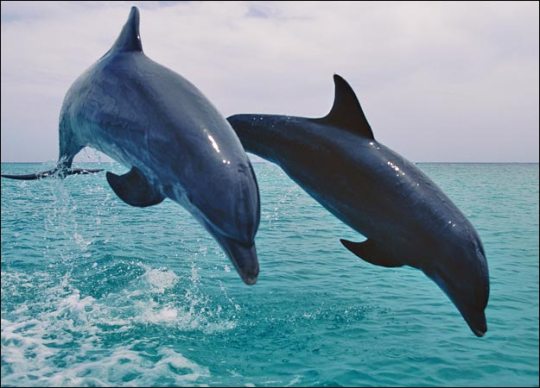Dolphin echolocation
In nature is possible to find the most intelligent systems. And sometimes I can’t understand why we don’t try to learn more from it and imitate them. Why do we automatically consider our iPod/mobile/laptop the most clever machine ever. After all machines are the fruit of our evolution, and so their evolution is completely dependent on ours. It is limited by our own intelligent. And now I ask myself… has human intelligence reached its maximum? Because evolution is absolutely linked to survival, not to consumerism. What will be the next step of our species? Will we develop the skill of procreating via Facebook? Will we have three more hands to carry more Primark’s bags simultaneously? Anyway…
Going back to natural systems, I will talk about dolphin echolocation, the natural equivalent to sonar (whereas bats hold the patent for the radar equivalent!). Dolphins use this system to detect really small objects underwater. They produce series of clicks of short duration and high intensity, at frequencies as high as 120 kHz, thanks to a region in their head which is called melon (not the fruit!). Dolphins point their head at the desired direction and project these clicks in narrow beams, which strike objects (sometimes penetrating through them) and produce echoes. Then they receive those echoes by means of their lower jaw and a complex fatty structure that transmits the vibrations to the middle ear. Finally, dolphin’s brain interprets the echoes, extracting information not just about the distance and direction of the object, but about its size, shape, texture and density as well! It seem that dolphin’s echolocation sense is closely linked with their visual sense, so they easily relate things heard to things seen, reconstructing an object’s image from its echo. For example, a dolphin could distinguish an aluminum dish from a copper one, even if they were painted with the same colour. Or it could distinguish a hollow pipe from a solid one!
Paul Langevin invented the sonar around 1915. And now, tell me, how many time had been dolphins using echolocation before that date?
Most of answers are in nature.
